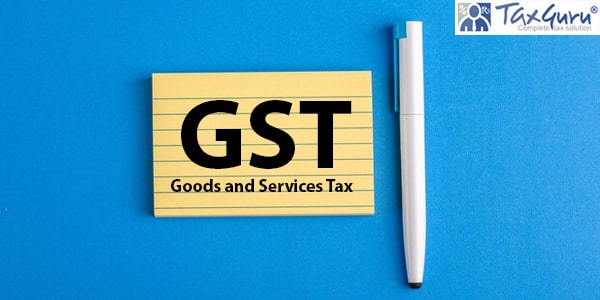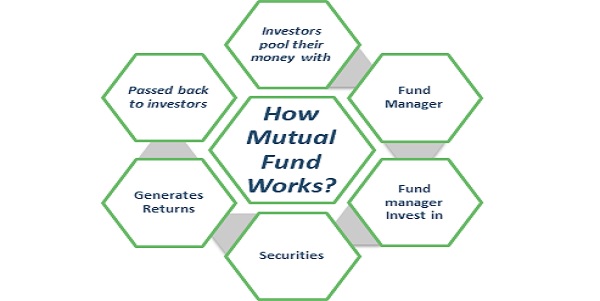Case Law Details
The assessee’s second ground is in respect of disallowance of repair and maintenance expenses of a rented premises at Rs. 42.66 lacs. The assessee, it was explained, had taken an office premises on rent in October, 2007 for a period of five As the said premises was old and not in use for a long time, it incurred the impugned expenditure towards repair and renovation of the said premises. The same was only toward achieving its’ functional utility.
No capital asset had come into existence thereby. Further, it needed to be borne in mind that the same is in respect of rented premises and, accordingly, allowable u/s.30(a)(i), which employs the word ‘repairs’, in contradistinction to the words ‘current repairs’, i.e., in respect of non-tenanted house property, which falls u/s. 30(a)(ii). The Revenue’s objection, on the other hand, is based on the premise that the nature and the volume of the expenditure would not qualify it to be a repair, which only could be allowed u/s.30 of the Act. The expenditure was admittedly on renovation, capital in nature, and would therefore stand to be capitalized, albeit eligible for depreciation, Reference for the purpose is made to sec.32 read with New Appendix 1 of Income Tax Rules, Part A-I(2).
The expenditure incurred being toward false ceiling; fixing tiles/flooring; replacing glasses; wooden partitions; replacement of electrical wiring; earthing; replacement of G.I. pipes, plumbing and sanitation lines; plaster and painting of walls. A premises, it may be appreciated, is constituted not merely by, or only of, civil structure, in-as-much as the same by itself does not render it functional for the stated purpose of its user. In fact, the impugned expenditure includes labour for civil work also, paid to one, Akshar Construction, at Rs.9.78 lacs, so that the work could possibly include some structural changes as well. The issue involved, thus, reduces to as to whether the expenditure on extensive repairs and renovation could be allowed in respect of a tenanted premises. The same can by no means be regarded as ‘current repairs’, the ambit of which is fairly restricted, denoting a repair that is required to be attended to as soon as the need for it arises. ‘Repairs’, though a term of wider scope, yet cannot extend beyond that of the term itself. A repair, by definition, is toward the maintenance and preservation of an ‘existing’ asset. Surely, the advantage or asset, in terms of its functional utility and capacity for the business, needs to be maintained, so that expenditure for retaining the same is essentially revenue expenditure, which, again, by definition, does not lead to or result in an enhancement or improvement. The premises in the instant case was admittedly not in use for a long time and, thus, in a dysfunctional, if not dilapidated, state prior to it being acquired by the assessee. The expenditure stands thus incurred on refurbishment and renovation of an old premises, in an inoperable state, so as to make it fit for use. It is therefore wrong to classify or describe it as ‘repairs’. The expenditure was incurred to render it in a functional state and, therefore, is clearly in the capital field. Could, one may ask by way of a test, the answer be any different if the same was acquired on own account? The ingredients and prerequisites of a capital expenditure would remain the same, and not undergo any change depending on the object matter of the expenditure, i.e., whether an owned or leased premises, and which itself is the premise of Explanation 1 to section 32(1)(ii), invoked by the Revenue.
Total renovation, leading to substantial improvements, is only capital expenditure, as clarified by the apex court in Ballimal Naval Kishore v. CIT [1997] 224 ITR 414 (SC). It is nobody’s case, nor could be, that the improvement is not enduring or shall not inure in future, particularly upon incurring regular, maintenance expenditure. Reference may also be made to the decision in the case of CIT v. Madras Cements Ltd. [2002] 255 ITR 243 (Mad), rendered relying on Ballimal Naval Kishore (supra) and applying New Shorrock Spinning & Mfg. Co. Ltd. v. CIT [1956] 30 ITR 338 (Bom). The asset being also not owned by the assessee, it is, strictly speaking, not a case of replacement, but of acquisition of an advantage of enduring nature – for the first time, an asset by definition. The impugned expenditure is in fact only toward effectuating the decision of acquiring the premises (by way of lease) in the first place, by making it fit for use, both in terms of capacity and capability, in-as-much as it has both quantitative and qualitative attributes, so as to constitute an improvement. It is not a case of a lumpsum payment in lieu of annual business expenditure. The benefit arising out of a capital expenditure, again, does not imply permanence, in which case no expenditure even on regular maintenance, or for keeping it in a state of good repairs, a stipulation that marks most tenancy agreements, would be required. The said benefit, though, cannot also be said to be limited to the period of lease, which may well be extended. Further, that the same, i.e., capital expenditure, is excluded, stands amply clarified per Explanations to sections 30 and 31 of the Act, brought on the statute by Finance Act, 2003 w.e.f. 0 1.04.2004. The expenditure, in our view, thus stands rightly considered by the ld. CIT(A) to form a part of an admissible asset in view of Explanation 1 below section 32(1)(ii), carving an exception for depreciation, which is generally allowed only on assets owned by an assessee, on a building not owned by it, but in respect of which it holds a lease or other right of occupancy. A question may arise as to the fate of the written down value (WDV) of the relevant block of assets on the termination or expiry of the lease or rent arrangement, leading to the vacation of the premises. The assessee in such a case would continue to be entitled to its claim for deduction on the relevant block of assets, subject of course to the adjustment in respect of ‘moneys payable’, if any, as explained by the tribunal in Metro Exporters Pvt. Ltd. (in ITA No. 73 15/Mum/2012 dated 30.09.2014, as modified by its’ further order dated 30.01.2015), on such an issue arising before it for adjudication.
Reliance by the assessee on the decision in the case of CIT vs. Hi Line Pens (P.) Ltd. [2008] 306 ITR 182 (Del) is in our view misplaced. The issue in the present case in our view reduces to or rests in the narrow compass of whether the impugned expenditure is capital or revenue in nature. We have already issued a definite finding of the same as being toward making the premises functional; rather, transforming it from an inoperable state – and, further, only as per the assessee’s requirements, for the first time and, therefore, capital in nature. This finding of fact is in relation to the nature of expenditure, so that no presumption with regard thereto, as with reference to the premises being not owned, shall obtain. Rather, where for an extended period, the lease-hold or other right of occupancy could itself be regarded as a capital asset, even as clarified by the hon’ble jurisdictional high court in CIT vs. Khimline Pumps Ltd. [2002] 258 ITR 459 (Bom). The hon’ble court in the cited case, as a reading of its decision would show, allowed the assessee’s claim for similar expenditure on the basis that the same was admissible u/s. 30(a)(i), which uses the word ‘repairs’, the scope of which is wider that ‘current repairs’, covered u/s. 30(a)(ii). The apex court in CIT vs. Saravana Spg. Mills (P.) Ltd. [2007] 293 ITR 201 (SC) was concerned with a claim u/s. 3 1(i), distinguishing the said decision on that basis. The hon’ble court, with respect, however, did not examine or dilate on the scope of the term ‘repairs’, either with reference to judicial precedents or even otherwise. True, the hon’ble apex court in Saravana Spg. Mills (P.) Ltd. (supra) was concerned with a claim u/s. 3 1(i), which deals with ‘current repairs’ of plant, machinery and furniture. So, however, as a reading of its decision, binding on all courts in India, would show, it clarifies the scope and ambit of the word ‘repairs’ to exclude capital expenditure. This in fact represents its consistent view in the matter, applying its earlier decision in Ballimal Naval Kishore (supra), affirming the decision by the hon’ble jurisdictional high court reported at [1979] 119 ITR 292 (Bom). The apex court applied the test of capital or revenue expenditure, which it noted the high court had failed to, reproducing the test laid down in the matter by C.J. Chagla, speaking on behalf of the hon’ble jurisdictional high court in New Shorrock Spinning & Mfg. Co. Ltd. (supra), wherein it, and in the context of s. 10(2)(v) (of the Income Tax Act, 1922), which corresponds to s. 3 1(i) of the 1961 Act only, clarified that repairs has to be understood in contradistinction to renewals and restoration, as under:
‘The simple test that must be constantly borne in mind is that as a result of the expenditure which is claimed as an expenditure for repairs what is really being done is to preserve and maintain an already existing asset. The object of the expenditure is not to bring a new asset in to existence, nor is its object the obtaining of a new or fresh advantage. This can be the only definition of “repairs” because it is only by reason of this definition or repairs that expenditure is a revenue expenditure.
If the amount spent was for the purpose of bringing into existence a new asset or obtaining a new advantage, then obviously such an expenditure would not be an expenditure of revenue nature but it would be a capital expenditure and it is clear that the deduction which the legislature has permitted under s. 10(2)(v) is a deduction where the expenditure is a revenue expenditure and not a capital expenditure.’ (para 14, at page 210)
[emphasis, ours]
As thus evident, the concept of ‘repairs’ and ‘revenue expenditure’ were considered as pari materia and co-extensive in-as-much as in the view of the hon’ble court, since approved by the apex court, repair could not, by definition, include capital expenditure. The hon’ble court in the said case, like-wise, did not examine the expenditure from the stand point of it being revenue or capital. This could perhaps be for the reason that the year under reference before it was A.Y. 1997-98. The amendments to ss. 30 and 31 w.e.f. 01.04.2004, by way of Explanations thereto, to the effect that the cost of repairs and, as the case may be, current repairs, shall not include any expenditure in the nature of capital expenditure, become now incumbent to consider, even as pointed out by the hon’ble apex court. The same have a direct impact on the decision in the case of Hi Line Pens Pvt. Ltd. (supra). Rather, in view of the foregoing settled position of law, as clarified by the decisions which stand approved by the apex court in Saravana Spg. Mills (P.) Ltd. (supra), it may not be incorrect to say that the said Explanations are clarificatory and, thus, retrospective. The said decision, thus, apart from the fact that it does not review the binding judicial precedents explaining the scope of the term ‘repairs’, is also inapplicable in view of the extant law, i.e., as in force A.Y. 2004-05 onwards, and, accordingly, reliance thereon by the assessee would be of no moment.
In view of the foregoing, we uphold the impugned order on this ground, dismissing the assessee’s ground before us.





















IMPROMPTU:
Two points calling for attention are: 1. It was a 5 year lease; the duration, from the view point of a business man / commercial sense or outlook, cannot be regarded to be so ‘enduring’ as to lie in a capital field.2.In the erstwhile scheme of provisions of Chapter XXA, which even after the cut-off date (Sept 30, 1986)continue to be of relevance for certain purposes, such as taxation of House Property income and capital gains,less than 12 years lease is not considered to be long enough to be caught as in ‘capital field’. in view of these aspects,-not seen to have been argued or sufficiently brought to focus,hence not gone into in greater details,- perhaps,the assessed, if so advised, may be expected to pursue its claim in further proceedings. On its part, the Revenue will do well to examine the futility of keeping on raising and battling on such frivolous isses, principally having regard to the fact that ultimately , in the long run/over the period,the Revenue may have nothing to gain or lose. Over to Advising professionals for further useful deliberation.